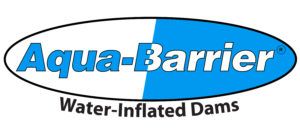Over 3 million miles of rivers and streams in the United States, and many of these flow into the estimated 84,000 dams around the country. But did you know that not all dams are created equal? They aren’t. In fact, there are many different kinds of dams, and they each have their own uses.
Various Kinds of Dams
[bctt tweet=”Did you know there is more than one kind of dam and they each have a different use? Here are 7 different kinds of dams and how they are used.” via=”no”]
A dam is a barrier that restricts or stops the flow of water, helps suppress floods, as well as providing irrigation, industrial, and aquaculture uses. Here are seven of the different kinds of dams used across America and what they are used for.
- Diversion Dam
- Buttress Dam
- Embankment Dam
- Cofferdam
- Storage Dam
- Detention Dam
- Gravity Dam
1) Diversion Dam
Like the name says, a diversion dam is used to divert water. They provide pressure to push water into ditches, canals, or other areas used for conveyance. Diversion dams are typically lower in height and have a small water storage area in it’s upstream.
2) Buttress Dam
Buttress dams can take many forms, but they all consist of a sloping deck supported by intervals of buttresses. There are three main buttress dams, including: multiple arch type, massive head type, and deck type. Buttress dams usually use less concrete than other dams but are not necessarily cheaper.
3) Embankment Dam
An embankment dam is a large, artificial dam that is constructed with natural excavated materials or industrial waste materials, such as compacted plastics, and various compositions of soil, sand, rock, and clay.
4) Cofferdam
A cofferdam is a temporary, portable dam used for a variety of projects including bridge repair, shoreline restoration, pipeline installation, and many other construction projects. A cofferdam is used to close off some or all of a construction area. Aqua-Barrier® Inflatable Cofferdams are made from high-grade industrial vinyl coated polyester and can be used on all terrain and in any conditions. They are reusable and compact for transportation.
5) Storage Dam
These dams are not mean to divert or keep water out, but to keep water in. Storage dams are constructed to store water during the rainy seasons, supply water to the local wildlife, and store water for hydroelectric power generation, and irrigation. Storage dams are the most common types of dams.
6) Detention Dam
Detention dams are specifically constructed for flood control by retarding flow downstream, helping reduce flash floods (to some extent). The water is retained in a reservoir to be later gradually released.
7) Gravity Dam
A gravity dam is a massive, man-made concrete dam designed to hold large volumes of water. Because of the heavy concrete used, it is able to resist the horizontal thrust of the water, and gravity essentially holds the dam to the ground. They are used to block rivers in wide valleys and must be built on a strong foundation of bedrock.
Different Kinds of Dams
ProTip: There are many different kinds of dams and each has their different uses. If you are looking for a temporary dam to create a dry work site for your next construction project, a cofferdam is your best option.
There are many different kinds of dams, and they are all an important part of our country, providing for domestic, industry, and irrigation uses, including water for drinking, bathing, hydroelectric power generation, water storage, flood protection, and more.
Contact us to learn more about the different kinds of dams and their uses.


